Test bank for Fundamentals of Corporate Finance 3e by Jonathan Berk 0133576876
$38.00
This is a digital format book: Official Test bank is to accompany the Fundamentals of Corporate Finance (2014) by
Jonathan Berk, Peter DeMarzo, Jarrad Harford
. Textbook is NOT included.
Full test bank for the textbook. Test bank covers True | False
questions, Short Answer questions, Multiple Choice and their answers. A
must have to prepare your exams. Instant Download after purchase.
ISBN: 0133576876
ISBN-13: 9780133576870
- Description
- Reviews (0)
Description
You will receive this product immediate after placing the order
***THIS IS NOT THE ACTUAL BOOK. YOU ARE BUYING the Test Bank in e-version of the following book***
– The Test Bank is what most professors use an a reference when making exams for their students, which means there’s a very high chance that you will see a very similar, if not exact the exact, question in the test!
– The file is either in pdf, doc, rtf or zipped in the package and can easily be read on PCs and Macs.
– Delivery is INSTANT. You can download the files IMMEDIATELY once payment is done.
We also faced similar difficulities when we were students, and we understand how you feel.
But now, with the Test bank for Fundamentals of Corporate Finance 3e by Jonathan Berk 0133576876, you will be able to
* Anticipate the type of the questions that will appear in your exam.
* Reduces the hassle and stress of your student life.
* Improve your studying and also get a better grade!
* Get prepared for examination questions.
* Can save you time and help you understand the material.
This is the quality of service we are providing and we hope to be your helper.
Delivery is in the next moment. Test Bank is accurate.
If you have any questions, or would like a receive a sample chapter before your purchase, please contact us at inquiry@testbanksafe.com
Fundamentals of Corporate Finance, 3e (Berk/DeMarzo/Harford)
Chapter 1 Corporate Finance and the Financial Manager
1.1 Why Study Finance?
1) The Valuation Principle shows how to make the costs and benefits of a decision comparable so that we can evaluate them properly.
Answer: TRUE
Diff: 1 Var: 1
Skill: Conceptual
AACSB Objective: Analytic Skills
Author: DS
Question Status: Previous Edition
2) Financial decisions require that you weigh alternatives in strictly monetary terms.
Answer: FALSE
Diff: 1 Var: 1
Skill: Conceptual
AACSB Objective: Analytic Skills
Author: DS
Question Status: Revised
3) Which of the following best describes why the Valuation Principle is a key concept in making financial decisions?
A) It shows how to assign monetary value to intangibles such as good health and well-being.
B) It allows fixed assets and liquid assets to be valued correctly.
C) It gives a good indication of the net worth of a person, item, or company and can be used to estimate any changes in that net worth.
D) It shows how to make the costs and benefits of a decision comparable so that we can weigh them properly.
Answer: D
Diff: 1 Var: 1
Skill: Conceptual
AACSB Objective: Analytic Skills
Author: DS
Question Status: Previous Edition
1.2 The Four Types of Firms
1) Partnerships are the most common type of business firms in the world.
Answer: FALSE
Diff: 1 Var: 1
Skill: Conceptual
AACSB Objective: Analytic Skills
Author: DS
Question Status: Revised
2) Corporations have come to dominate the business world through their ability to raise large amounts of capital by sale of ownership shares to anonymous outside investors.
Answer: TRUE
Diff: 1 Var: 1
Skill: Conceptual
AACSB Objective: Analytic Skills
Author: DS
Question Status: Revised
3) Which of the following types of firms does NOT have limited liability?
A) sole proprietorships
B) limited partnerships
C) corporations
D) none of the above
Answer: A
Diff: 1 Var: 1
Skill: Conceptual
AACSB Objective: Analytic Skills
Author: DS
Question Status: Revised
4) Over four-fifths of all U.S. business revenue is generated by which type of firms?
A) sole proprietorships
B) partnerships
C) limited partnerships
D) corporations
Answer: D
Diff: 1 Var: 1
Skill: Conceptual
AACSB Objective: Analytic Skills
Author: DS
Question Status: Revised
5) What is the most common type of firms in the United States and the world?
A) sole proprietorships
B) partnerships
C) limited partnerships
D) corporations
Answer: A
Diff: 1 Var: 1
Skill: Conceptual
AACSB Objective: Analytic Skills
Author: DS
Question Status: Previous Edition
6) Which of the following is typically the major factor in limiting the growth of sole proprietorships?
A) The organizational structure of such firms tends to become extremely complicated over time.
B) It is extremely difficult to transfer control of such firms to a new owner if the present owner dies or wishes to sell the firm.
C) The amount of money that can be raised by such firms is limited by the fact that the single owner must make good on all debts.
D) Investors have a great deal of control over the day-to-day running of such firms, leading to confusion when conflicts in direction arise.
Answer: C
Diff: 1 Var: 1
Skill: Conceptual
AACSB Objective: Analytic Skills
Author: DS
Question Status: Revised
7) Joe is a general partner in a limited partnership firm, while Jane is a limited partner in the same firm. Which of the following statements regarding their respective relationships to the firm is correct?
A) Joe has no management authority within the partnership.
B) Jane is legally involved in the managerial decision making of the firm.
C) Jane’s liability for the firm’s debts consists solely of her investment in the firm.
D) Withdrawal of Jane from the partnership will dissolve the partnership.
Answer: C
Diff: 1 Var: 1
Skill: Conceptual
AACSB Objective: Reflective Thinking Skills
Author: DS
Question Status: Revised
8) What is the major way in which the roles and obligations of the owners of a limited liability company differ from the roles and obligations of limited partners in a limited partnership?
A) The owners of a limited liability company have personal obligation for debts incurred by the company.
B) There is no separation between the company and its owners in a limited liability company.
C) The owners of a limited liability company can withdraw from the company without the company being dissolved.
D) The owners of a limited liability company can take an active role in running the company.
Answer: D
Diff: 1 Var: 1
Skill: Conceptual
AACSB Objective: Analytic Skills
Author: DS
Question Status: Previous Edition
9) In which of the following ways is a limited liability company like a corporation?
A) It was created and developed first in the United States.
B) It can choose to be considered a partnership for tax purposes.
C) Its owners’ liability is restricted to their investment.
D) It is directly managed by the owners.
Answer: C
Diff: 1 Var: 1
Skill: Conceptual
AACSB Objective: Analytic Skills
Author: DS
Question Status: Revised
10) Why is it possible for a corporation to enter into contracts, acquire assets, incur obligations, and enjoy protection against the seizure of its property?
A) The number of owners, and hence the spread of risk among these owners, is not limited.
B) Its owners are liable for any obligations it enters into.
C) The state in which a corporation is incorporated provides safeguards against any wrongdoing by the corporation.
D) It is a legally defined, artificial entity that is separate from its owners.
Answer: D
Diff: 1 Var: 1
Skill: Conceptual
AACSB Objective: Analytic Skills
Author: DS
Question Status: Revised
11) Which of the following features of a corporation is LEAST accurate?
A) The owners’ identity is separate from a corporation.
B) The owners of a corporation are not liable for any obligations the corporation enters into.
C) Changes in ownership do not result in the dissolution of the corporation.
D) Earnings from a corporation are taxed only once.
Answer: D
Diff: 1 Var: 1
Skill: Conceptual
AACSB Objective: Analytic Skills
Author: DS
Question Status: Revised
12) What is the major advantage corporations have over other business entities?
A) It is easier for a corporation to raise capital than other forms of businesses.
B) A corporation is treated as a separate legal entity for tax and legal purposes.
C) A corporation’s shares can be freely traded among its shareholders.
D) All of the above are advantages that a corporation has over other business forms.
Answer: D
Diff: 1 Var: 1
Skill: Conceptual
AACSB Objective: Analytic Skills
Author: DS
Question Status: Previous Edition
13) Helen owns 10.2% of the stock of the Median Corporation. If Median makes a dividend payment of $25,000,000 paid proportionally to its shareholders, how much of this amount would Helen receive, disregarding tax?
A) $3,060,000
B) $2,550,000
C) $3,570,000
D) $2,040,000
Answer: B
Explanation: B) Helen will receive 10.2% of the dividend payment proportional to her ownership:
0.102 × 25,000,000 = $2,550,000
Diff: 2 Var: 50+
Skill: Analytical
AACSB Objective: Analytic Skills
Author: DS
Question Status: Previous Edition
14) Valiant Corp. is a C corporation that earned $3.4 per share before it paid any taxes. Valiant Corp. retained $1 of after-tax earnings for reinvestment and distributed what remained in dividend payments. If the corporate tax rate was 35% and dividend earnings were taxed at 12.5%, what was the value of the dividend earnings received after-tax by a holder of 100,000 shares of Valiant Corp.?
A) $105,875
B) $127,050
C) $148,225
D) $84,700
Answer: A
Explanation: A) Corporate tax paid on $3.4 earnings = $3.4 × 0.35 = 1.190;
earnings after-tax = 3.4 – 1.190 = $2.210; earnings distributed as dividends = $2.210 – $1 = $1.2100;
taxes paid on dividends by a shareholder = 1.2100 × 0.125 = 0.1513;
after-tax dividends per share = 1.2100 – 0.1513 = $1.0588; hence a holder of 100,000 shares receives
1.0588 × 100,000 = $105,875
Diff: 2 Var: 22
Skill: Analytical
AACSB Objective: Reflective Thinking Skills
Author: DS
Question Status: Revised
15) Which of the following is unique for an S corporation?
A) The profits and losses of an S corporation are not taxed at the corporate level, but shareholders must include these profits and losses on their individual tax returns.
B) The shareholders of an S corporation must include the firm’s profit and losses in their individual income taxes even if no money is distributed to them.
C) There is a maximum limit on the number of shareholders for an S corporation.
D) None of the above statements is unique.
Answer: D
Diff: 3 Var: 1
Skill: Conceptual
AACSB Objective: Analytic Skills
Author: DS
Question Status: Revised
16) You are a shareholder in a corporation which has elected subchapter S tax treatment. The corporation announces a profit of $6 per share, of which it retains $1 for reinvestment and distributes the rest as dividend payments. Given that the personal tax rate is 35%, how much tax must you pay per share?
A) $0
B) $2.10
C) $1.75
D) $2.52
Answer: C
Explanation: C) Tax paid by shareholder of S corporation = 5 × 0.35 = $1.75
Diff: 2 Var: 8
Skill: Analytical
AACSB Objective: Reflective Thinking Skills
Author: DS
Question Status: Revised
17) A C corporation earns $8.30 per share before taxes. The corporate tax rate is 39%, the personal tax rate on dividends is 15%, and the personal tax rate on non-dividend income is 36%. What is the total amount of taxes paid if the company pays a $6.00 dividend?
A) $3.31
B) $4.96
C) $4.14
D) $5.79
Answer: C
Explanation: C) Corporate tax = $8.30 × 39% = $3.24,
Diff: 2 Var: 50+
Skill: Analytical
AACSB Objective: Reflective Thinking Skills
Author: WC
Question Status: New
18) An S corporation earns $9.10 per share before taxes. The corporate tax rate is 39%, the personal tax rate on dividends is 15%, and the personal tax rate on non-dividend income is 36%. What is the total amount of taxes paid if the company pays a $5.00 dividend?
A) $3.28
B) $3.93
C) $2.62
D) $4.59
Answer: A
Explanation: A) $9.10 × 36% = $3.28
Diff: 2 Var: 50+
Skill: Analytical
AACSB Objective: Reflective Thinking Skills
Author: WC
Question Status: New
19) A C corporation earns $8.30 per share before taxes and the company pays a dividend of $4.00 per share. The corporate tax rate is 39%, the personal tax rate on dividends is 15%, and the personal tax rate on non-dividend income is 36%. What is the after-tax amount an individual would receive from the dividend?
A) $2.72
B) $4.08
C) $4.76
D) $3.40
Answer: D
Explanation: D) Personal tax = $4 × 15% = $0.60.
Diff: 2 Var: 50+
Skill: Analytical
AACSB Objective: Reflective Thinking Skills
Author: WC
Question Status: Revised
20) A C corporation earns $4.30 per share before taxes. The corporate tax rate is 35%, the personal tax rate on dividends is 20%, and the personal tax rate on non-dividend income is 39%. What is the total amount of taxes paid if the company pays a $3.00 dividend?
A) $1.68
B) $2.53
C) $2.11
D) $2.95
Answer: C
Explanation: C) Corporate tax = $4.30 × 35% = $1.51,
Diff: 2 Var: 50+
Skill: Analytical
AACSB Objective: Reflective Thinking Skills
Author: WC
Question Status: New
21) An S corporation earns $6.00 per share before taxes. The corporate tax rate is 35%, the personal tax rate on dividends is 20%, and the personal tax rate on non-dividend income is 39%. What is the total amount of taxes paid if the company pays a $2.00 dividend?
A) $1.87
B) $2.81
C) $3.28
D) $2.34
Answer: D
Explanation: D) $6.00 × 39% = $2.34
Diff: 2 Var: 50+
Skill: Analytical
AACSB Objective: Reflective Thinking Skills
Author: WC
Question Status: New
22) Which of the following people may not manage the operations of a firm in which they are part or full owners?
A) stockholders in S corporations
B) stockholders in C corporations
C) limited partners in a limited partnership
D) general partners in a limited partnership
Answer: C
Diff: 1 Var: 1
Skill: Conceptual
AACSB Objective: Analytic Skills
Author: DS
Question Status: Previous Edition
23) What is the process of double taxation for the stockholders in a C corporation?
A) Their shares are taxed when they are both bought and sold.
B) The corporation is taxed on the profits it makes, and the owners are taxed when this profit is distributed to them.
C) The owners of a corporation are taxed when they receive dividend payments and when they make a profit from the sale of shares.
D) The corporation must pay taxes on any profits it makes, and the capital raised by the sale of shares is also subject to taxation.
Answer: B
Diff: 1 Var: 1
Skill: Conceptual
AACSB Objective: Analytic Skills
Author: DS
Question Status: Previous Edition
24) A sole proprietorship is owned by ________.
A) one person
B) two or more persons
C) shareholders
D) bankers
Answer: A
Diff: 1 Var: 1
Skill: Definition
AACSB Objective: Analytic Skills
Author: JN
Question Status: Revised
25) Which of the following organization forms has the most revenue?
A) S corporation
B) limited partnership
C) C corporation
D) limited liability company
Answer: C
Diff: 1 Var: 1
Skill: Conceptual
AACSB Objective: Analytic Skills
Author: JN
Question Status: Previous Edition
26) Which of the following is NOT an advantage of a sole proprietorship?
A) single taxation
B) ease of setup
C) unlimited liability
D) no separation of ownership and control
Answer: C
Diff: 2 Var: 1
Skill: Conceptual
AACSB Objective: Analytic Skills
Author: JN
Question Status: Revised
27) A limited liability company is essentially ________.
A) a limited partnership without limited partners
B) a limited partnership without a general partner
C) just another name for a limited partnership
D) just another name for a corporation
Answer: B
Diff: 1 Var: 1
Skill: Conceptual
AACSB Objective: Analytic Skills
Author: JN
Question Status: Revised
28) What are the main differences between a partnership and a sole proprietorship?
Answer: While a sole proprietor has the same identity as its single owner, a partnership of general partners has the same identity as its partners. Each general partner is responsible for the decisions taken by that partner as well as any other general partner.
Diff: 1 Var: 1
Skill: Conceptual
AACSB Objective: Analytic Skills
Author: SS
Question Status: Revised
29) What are the main differences between a limited partnership and a limited liability corporation?
Answer: A limited partnership is required to have at least one general partner. A limited liability corporation is similar to a limited partnership but without the general partner.
Diff: 2 Var: 1
Skill: Conceptual
AACSB Objective: Analytic Skills
Author: SS
Question Status: Revised
30) How is a corporation different from most of the other forms of business organizations?
Answer: A corporation has a separate legal identity from those of its owners. This separation gives the owners limited liability for the actions of the corporation. The down side is the process of double taxation for each dollar earned by the corporation, once when it is earned by the corporation and subsequently when it is passed on to the owners.
Diff: 2 Var: 1
Skill: Conceptual
AACSB Objective: Analytic Skills
Author: SS
Question Status: Revised
1.3 The Financial Manager
1) The principal goal of a financial manager is to maximize the wealth of the stockholders.
Answer: TRUE
Diff: 1 Var: 1
Skill: Conceptual
AACSB Objective: Analytic Skills
Author: DS
Question Status: Revised
2) It is generally not the duty of financial managers to ensure that a firm has the cash it needs for day-to-day transactions.
Answer: FALSE
Diff: 1 Var: 1
Skill: Conceptual
AACSB Objective: Analytic Skills
Author: DS
Question Status: Previous Edition
Be the first to review “Test bank for Fundamentals of Corporate Finance 3e by Jonathan Berk 0133576876”
You must be logged in to post a review.

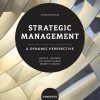
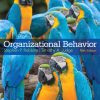

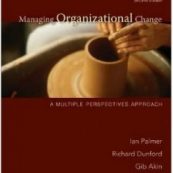
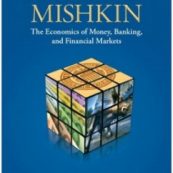
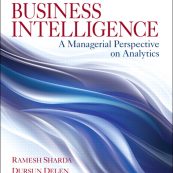
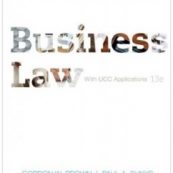
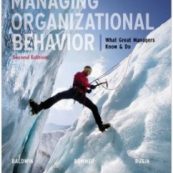
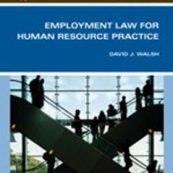
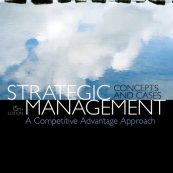
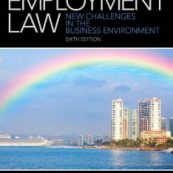
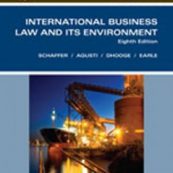
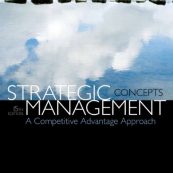
Reviews
There are no reviews yet.